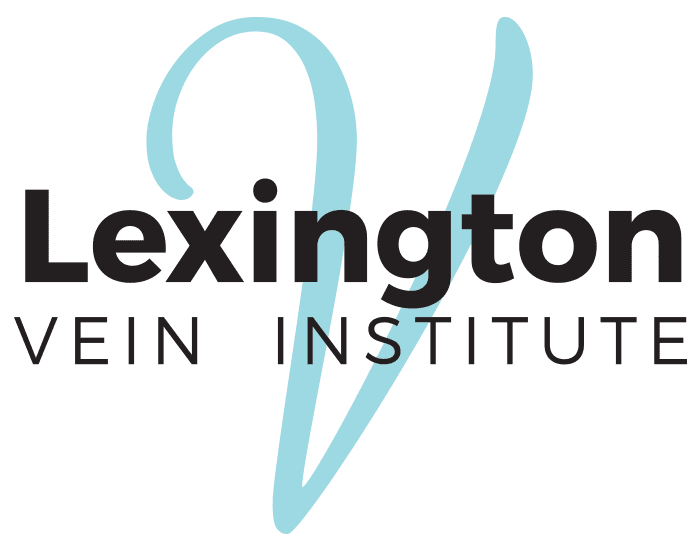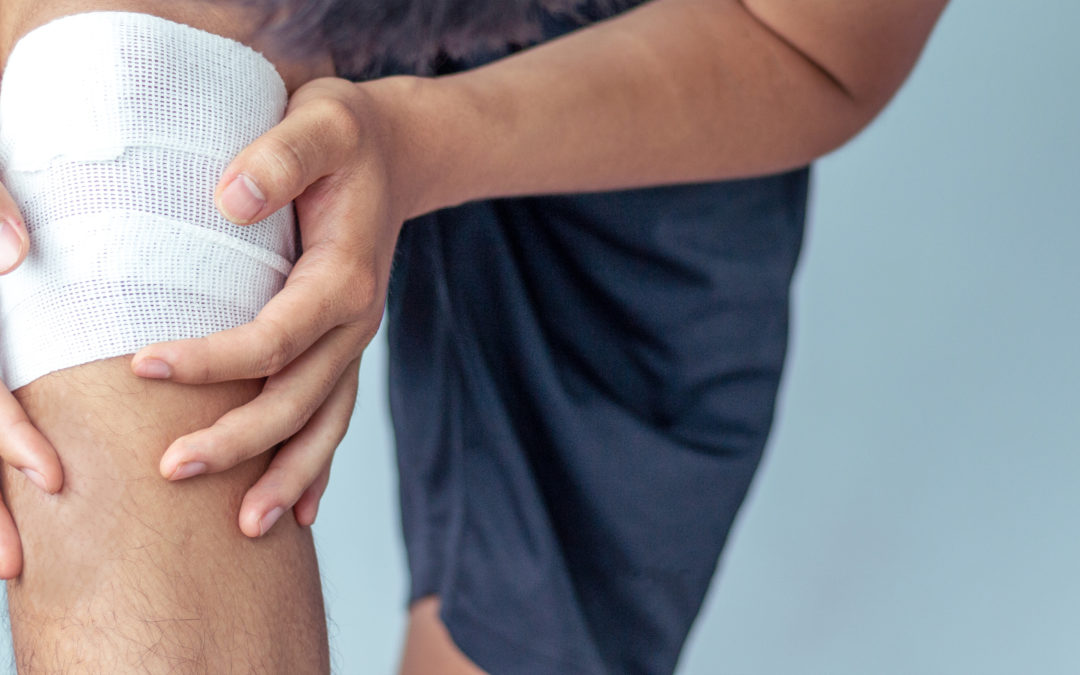
by Lexington Vein Institute | Oct 14, 2020 | Blog, Leg Ulcers
Varicose veins can have a variety of undesirable side effects. In some cases, they can lead to ulcers in the skin surrounding the veins. If you have recently discovered any changes in the color or texture of your skin, then you might be experiencing venous ulcers.
CAUSES AND SYMPTOMS
Venous ulcers are an uncommon, but serious consequence of untreated varicose veins. The greater pressure in your veins begins to limit blood flow to the surrounding, causing them to slowly die. If left unattended, an open wound can develop at the site of the affected vein.
While most patients with varicose veins are not likely to develop ulcers, some people with varicose veins or another form of chronic venous insufficiency are at a higher risk. Some established risk factors include obesity, old age, pregnancy, smoking, a prior injury in the leg such as a torn muscle or broken bone, a history of blood clots, and a family history of chronic venous insufficiency.
TREATMENT OPTIONS
Treatment For Pressure
Dr. Bacha treats varicose veins of the legs with minimally invasive endovenous laser therapy (EVLT). Moreover, during this quick in-office procedure, he destroys problematic veins using ultrasound guidance, a catheter, and a laser fiber.
Treatment For Ulcers
Dr. Bacha usually recommends compression therapy along with sterile rile dressing if we are dealing with venous stasis. At Lexington Vein Institute, we use a combination of the newest technology to identify the root causes of venous stasis ulcers. Our technology includes the use of laser treatment, Sclerotherapy, and Varithena. In addition, Dr. Bacha might recommend taking antibiotics if the ulcers are infected. In most circumstances, venous leg ulcers heal within a week of restoring normal venous pressure and closure of incompetent veins that surround the ulcer.
Dr. Bacha has helped several patients in the Lexington and surrounding area to heal wounds that have been difficult to treat.
LEG ULCERS SPECIALIST IN LEXINGTON, KY
Sores on your legs that don’t seem to heal on their own may need intervention from a trained phlebologist like Fadi Bacha, MD. A trusted vein specialist, Dr. Bacha in fact can quicken your recovery at Lexington Vein Institute in Lexington, Kentucky. In addition, Dr. Bacha offers endovenous laser therapy (EVLT) to destroy bad leg veins and help ulcers heal.
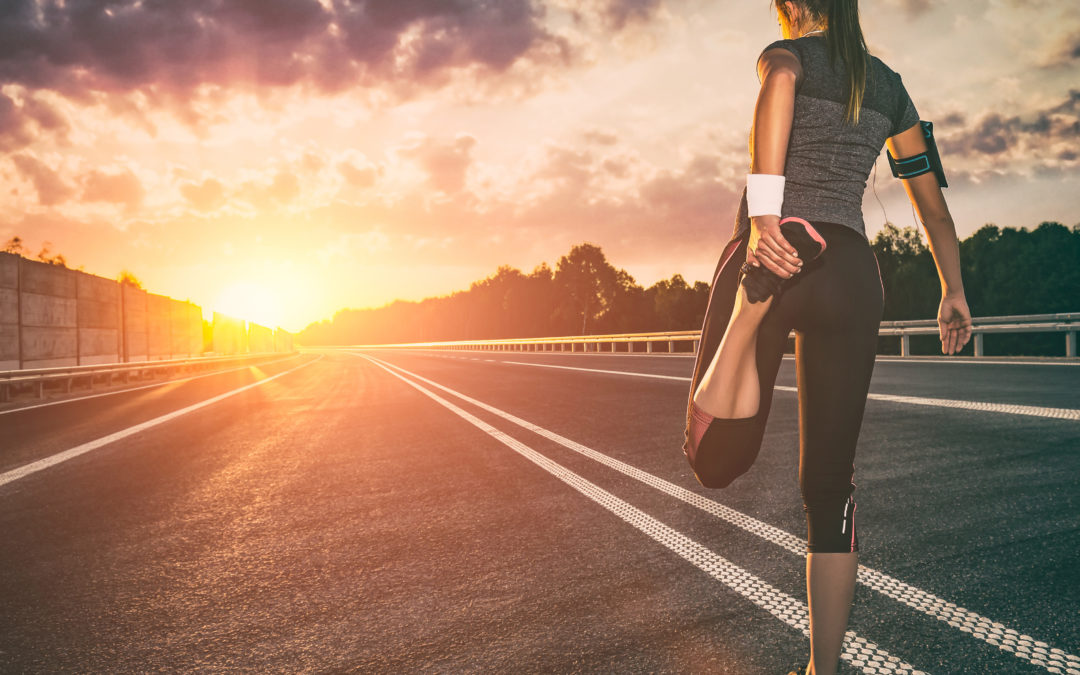
by Lexington Vein Institute | Sep 30, 2020 | Blog, Deep Vein Thrombosis
Older people and frequent flyers aren’t the only ones at risk for deep vein thrombosis. Young, healthy athletes are known to experience blood clots in the leg. Deep vein thrombosis usually strikes older people or frequent travelers, who sit in cramped seats for long hours, but you may be surprised to learn that several prominent athletes have experienced dangerous blood clots in the deep veins of the leg, as well.
The fact of the matter is that a number of factors put athletes at higher risk of DVT than most of the general population. Therefore, it’s critical that coaches and parents of athletes be aware of the symptoms of DVT.
Why Athletes Are at Risk
DVT in athletes may go undiagnosed because the symptoms mimic those of a muscle cramp in the leg or arm. Yet swollen, painful limbs that feel warm to the touch and have a reddish or blue color can also indicate DVT. If those signs are ignored, the clot can travel to the lungs, resulting in a life-threatening pulmonary embolism (PE). Shortness of breath, chest pains, a bloody cough, rapid heart rate, and a faint feeling are all symptoms of a PE, which requires immediate medical attention.
Although athletes may have some of the same risk factors for DVT as the general population, such as a congenital abnormality in the veins or an inherited clotting disorder, several unique circumstances increase their chance of DVT. Here are three:
Dehydration
Playing and working out every day requires that athletes stay well hydrated. When athletes suffer from dehydration, blood thickens and moves slowly through the veins. Slow-moving blood has a greater tendency to form clots.
Travel
Professional athletes and high school athletes alike spend long hours on planes and buses going to and from games. Being immobile in a cramped space for a prolonged time restricts blood flow in the legs and could lead to a clot.
Injury
Blood clots occur when a person is inactive or confined to bed after surgery. Although you may not think of athletes as inactive. However, they might have to step back from the playing field due to an injury. A broken leg, for example, may require orthopedic surgery and a cast covering the limb while it heals. During that time of inactivity, he or she may develop a blood clot.
To prevent DVT, coaches and parents should encourage their players and children to drink plenty of water. It is also important to move about when they’re on long trips on a bus or plane. But most importantly, coaches, parents, and athletes themselves must know the symptoms of DVT and get it checked out immediately by a doctor. If found early, DVT can be successfully treated with medications to break up the clot. Athletes may think they cannot develop a blood clot because they are young and healthy, but they can.
How is Your Vein Health?
Whether an athlete or not, everyone should have their veins checked regularly for signs of DVT and other venous disorders, such as varicose veins. At Lexington Vein Institute, our doctors and staff can assess your risk of DVT and develop treatment plans that will keep you safe from a blood clot. Contact our office today for an appointment.

by Lexington Vein Institute | Sep 24, 2020 | Blog, Restless Leg Syndrome
Patients who suffer from restless leg syndrome (RLS) actively seek remedies for the twitching as well as cramping that keeps them up at night. If you are one of the thousands of Americans who deal with RLS on a nightly basis, you’ve possibly come across several alternative therapy options such as magnesium supplements.
Magnesium is a naturally-occurring mineral in several common foods, including whole grains, green leafy vegetables, nuts, and baked potatoes. You can also buy magnesium supplements. Magnesium is important for many bodily functions, ranging from heart health to energy production.
Magnesium is also important for sleep regulation. This is due to the fact that it balances the amount of calcium in our cells. In fact, excessive calcium in the muscle cells can trigger muscle contractions and spasms similar to symptoms of RLS. Consequently, appropriate magnesium levels act as a barrier against unwanted calcium levels in the body, enhancing muscle relaxation and sleep quality.
Does magnesium fully cure restless leg syndrome? Although there have been some studies suggesting that magnesium provides RLS patients relief, magnesium will not treat the condition if there are other factors causing RLS, such as varicose veins.
What is causing your RLS?
A 1998 study published in the journal Sleep reported that 10 people suffering from periodic limb movements during sleep (PLMS) and moderate RLS slept better after taking magnesium supplements. However, you must only take magnesium supplements after consulting with your doctor, as it might interfere with other medications you have been prescribed.
Your doctor will also want to do a complete medical evaluation to learn what may be triggering your restless leg syndrome. RLS has been attributed to several conditions, including iron deficiency, diabetes, and heredity. Treating those conditions can bring about relief from RLS symptoms. In some cases, RLS has no link to an underlying medical issue and is known as primary RLS.
RLS & Varicose Veins
Several studies have highlighted a connection between RLS and varicose veins. When the subjects in these studies were treated for varicose veins, their RLS symptoms greatly diminished. Therefore, if you suffer from RLS and also have varicose veins, consulting with a vascular specialist about the different treatment options for your bulging veins could help you get an uninterrupted slumber. Today’s varicose vein procedures are done on an outpatient basis, require little to no anesthesia, and allow you to resume your normal activities after a short recovery period.
Restless Leg Syndrome Treatment in Lexington, KY
If you are seeking treatment for restless leg syndrome in Lexington, KY, Lexington Vein Institute can help. Your vein health is a critical component of your overall well-being. At Lexington Vein Institute we specialize in treating venous insufficiency with the latest in surgical and non-surgical methods. If you are suffering from unpleasant sensations, or having the urge to move your legs and can’t fall asleep, contact us today for an appointment.
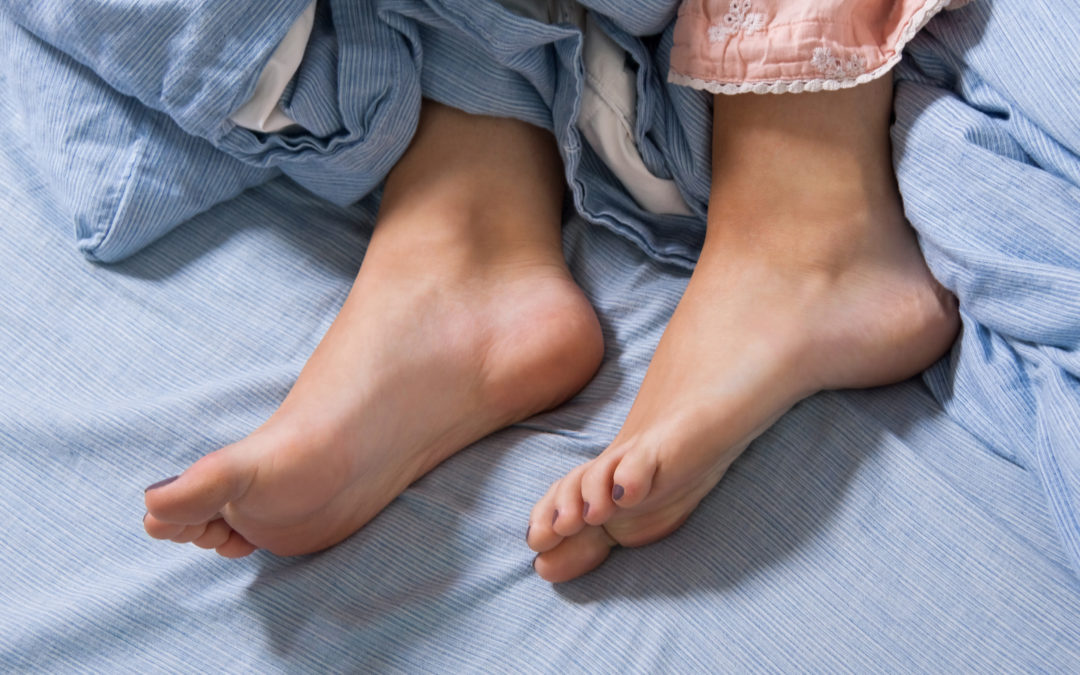
by Lexington Vein Institute | Sep 2, 2020 | Blog, Restless Leg Syndrome
Restless legs syndrome (RLS) is a condition that causes an uncontrollable urge to move your legs, usually because of an uncomfortable sensation. It typically happens in the evening or nighttime hours when you’re sitting or lying down. Moving eases, the unpleasant feeling temporarily. Restless legs syndrome, also known as Willis-Ekbom disease, can begin at any age and generally worsens as you age. It can disrupt sleep, which interferes with daily activities.
What are the symptoms?
- Sensations that begin after rest. The sensation typically begins after you’ve been lying down or sitting for an extended time, such as in a car, airplane, or movie theater.
- Relief with movement. The sensation of RLS lessens with movement, such as stretching, jiggling your legs, pacing, or walking.
- Worsening of symptoms in the evening. Symptoms occur mainly at night.
- Nighttime leg twitching. RLS may be associated with another, a more common condition called periodic limb movement of sleep, which causes your legs to twitch and kick, possibly throughout the night, while you sleep.
- Sometimes the sensations are difficult to explain. People with RLS usually don’t describe the condition as a muscle cramp or numbness. They do, however, consistently describe the desire to move their legs. It’s common for symptoms to fluctuate in severity. Sometimes, symptoms disappear for periods of time, then come back.
What are the causes?
Heredity
Sometimes RLS runs in families, especially if the condition starts before age 40. Researchers have identified sites on the chromosomes where genes for RLS may be present.
Pregnancy
Pregnancy or hormonal changes may temporarily worsen RLS signs and symptoms. Some women get RLS for the first-time during pregnancy, especially during their last trimester. However, symptoms usually disappear after delivery.
Suffering from restless leg syndrome in Lexington, KY?
If you feel an overwhelming urge to move your legs when you’re resting, contact Dr. Bacha who is a restless leg syndrome specialist in Lexington, Kentucky to take the next step towards relief. Practicing phlebology “Vein Disease” since 2007, Fadi Bacha, MD is a board-certified in Internal Medicine by the ABIM, diplomat by the American Board of Vein and Lymphatic, board-certified in Anti-Aging Medicine by the American Academy of Anti-Aging Medicine A4M, Registered Physician Vascular interpreter by APCA, who has been treating men and women with varicose and spider veins problems using the latest and most advance technology that include Sclerotherapy, Endovenous Laser Ablation, Varithena, and Ambulatory Phlebectomy. Dr. Bacha also treats a variety of venous disease complications such as Edema, Restless Legs Syndrome, Venous insufficiency Ulcers, and Deep Vein Thrombosis.
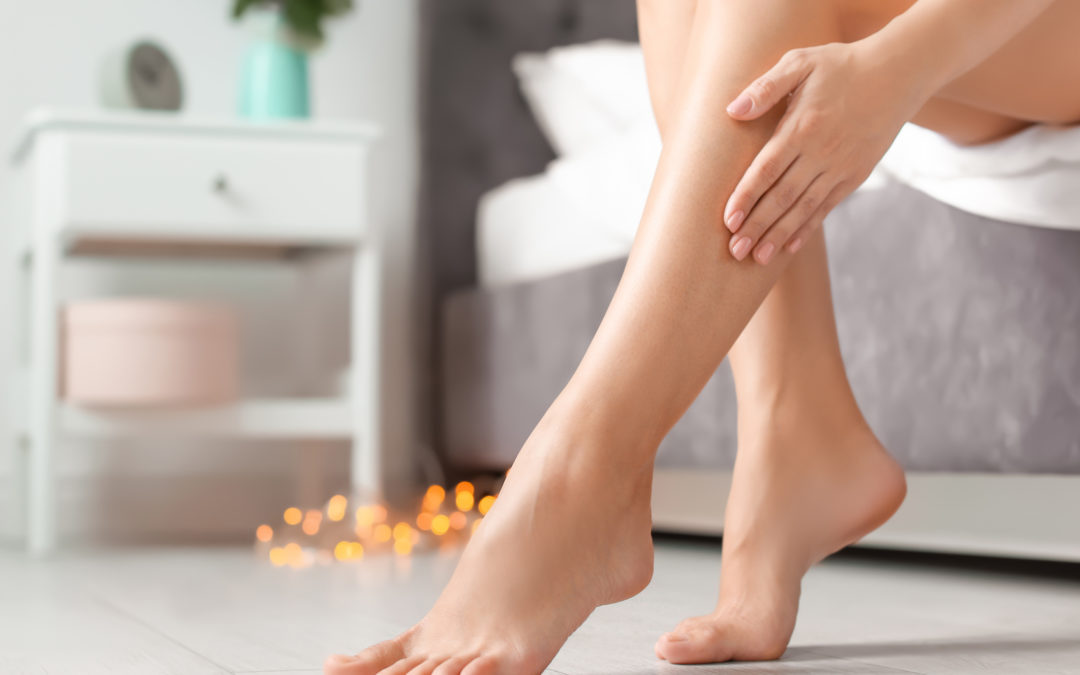
by Lexington Vein Institute | Sep 2, 2020 | Blog, Varicose Veins
Varicose veins are enlarged on knotted veins that most often appear due to abnormally high pressure on the veins. Most of the time, they appear on the thighs, ankles, and feet. While varicose veins aren’t always pleasing to look at, their negative aspects go far beyond that. They can cause a variety of health issues including pain, swelling, ulcers, and soreness in the legs and feet. There are various types of varicose veins, each with unique characteristics. This is since there are several kinds of veins in the legs and not all veins appear the same when they become varicose. Let’s look at some common types of varicose veins.
Saphenous Varicose
Saphenous varicose veins entail the saphenous veins in the legs. which swell significantly larger than their desired size and bulge out from the skin. The veins appear very large and rope-like. This kind of varicose veins can be colorless, however, are just as noticeable since they protrude out.
Reticular Varicose Veins
Reticular varicose veins spread out like a mesh and cover a wider area on the surface of the skin. The veins are typically thicker and appear in red, green, or purple hues. Reticular veins don’t always bulge out; however, they can be unpleasant sometimes.
Spider Veins
Spider veins are smaller in dimension, red or blue in color, and are common anywhere on the body. They commonly spread out in a web form rather than a mesh shape. Spider veins are also thinner and smaller than other varicose veins.
Why is This Crucial?
It is essential to recognize what type of varicose veins a patient has because it can assist in understanding what triggers them. Furthermore, different types of varicose veins might have somewhat different symptoms and progression patterns such as blood clots, and skin discoloration. Ultimately, understanding the type of varicose veins a patient has can help them get the ideal treatment to ensure more veins don’t also become varicose.
Who Should Examine Varicose Veins?
If you have varicose veins or any other chronic venous insufficiency, it’s best to see out a vein specialist. Veins specialists, such as Dr. Fadi Bacha, understand veins, the problems that influence them, as well as the latest treatment options available to treat them. Additionally, veins specialists can advise lifestyle adjustments such as compression stockings and avoiding standing or sitting for a long period of time. These lifestyle changes can help to prevent further veins from becoming varicose. If you are seeking an experienced vein specialist in the Lexington, KY, area, Lexington Vein Institute is the place for you.
Lexington Vein Institute in Lexington, Kentucky creates a safe and healing space that specializes in vein and lymphatic disorders. Practicing phlebology “Vein Disease” since 2007, Fadi Bacha, MD is a board-certified in Internal Medicine by the ABIM, diplomat by the American Board of Vein and Lymphatic, board-certified in Anti-Aging Medicine by the American Academy of Anti-Aging Medicine A4M, Registered Physician Vascular interpreter by APCA, who has been treating men and women with varicose and spider veins problems using the latest and most advance technology that include Sclerotherapy, Endovenous Laser Ablation, Varithena, and Ambulatory Phlebectomy. Dr. Bacha also treats a variety of venous disease complications such as Edema, Restless Legs Syndrome, Venous insufficiency Ulcers, and Deep Vein Thrombosis.

